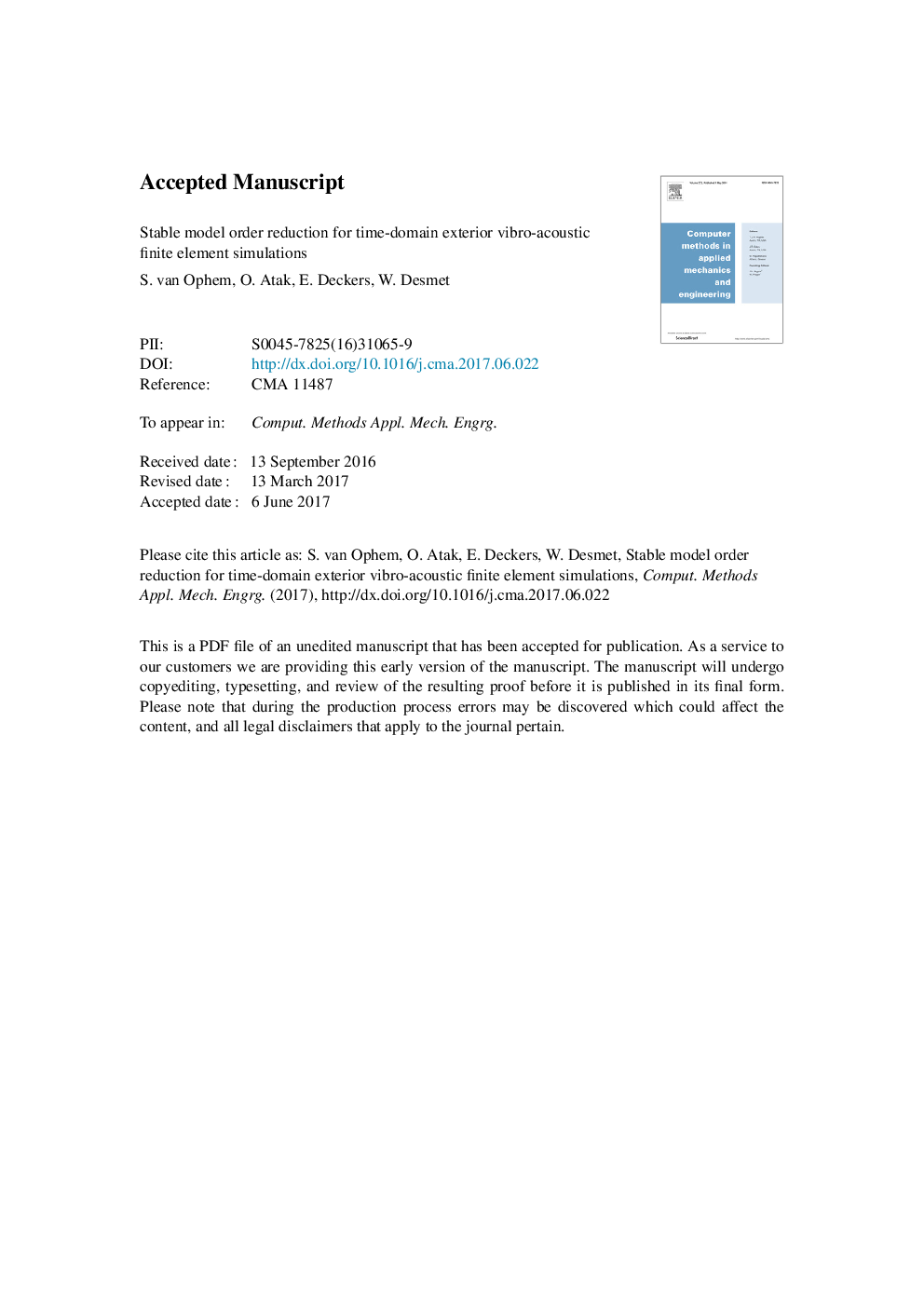| Article ID | Journal | Published Year | Pages | File Type |
|---|---|---|---|---|
| 4963791 | Computer Methods in Applied Mechanics and Engineering | 2017 | 61 Pages |
Abstract
This paper presents a novel method that enables model order reduction of a fully-coupled, exterior vibro-acoustic finite element model for time domain simulations. The method preserves the stability of the full model and reduces the amount of degrees of freedom significantly, with only a moderate amount of calculation complexity. Infinite elements are used on the finite element boundary to satisfy the Sommerfeld radiation condition. Two different strategies to calculate the reduced order model are compared. The first strategy works with a split reduced basis and can be applied on any fully stable model. The second strategy starts from a modified Everstine formulation and directly builds a reduced basis from the full model, leading to more compact reduced order models. Furthermore, a method is derived to perform explicit time integration on the reduced system, while avoiding the inversion of the mass matrix, which might not be possible due to the presence of the infinite elements. Also this method is shown to preserve the stability of the model and a computationally efficient way for implementation of the method is discussed. The effectiveness of the novel methodology is demonstrated with two numerical models.
Related Topics
Physical Sciences and Engineering
Computer Science
Computer Science Applications
Authors
S. van Ophem, O. Atak, E. Deckers, W. Desmet,
